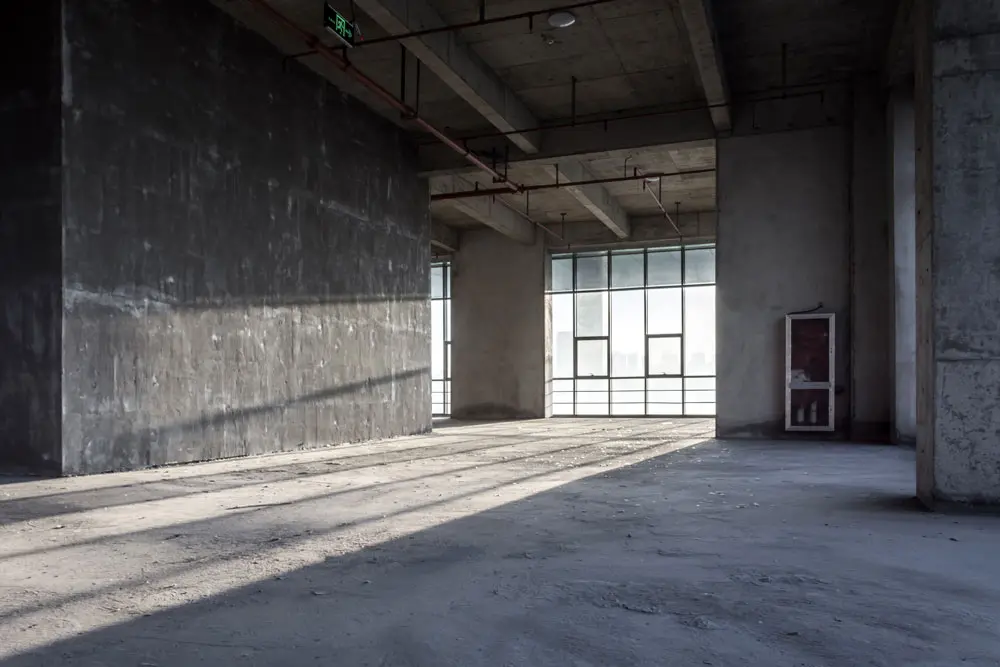For the polyurethane substructure and various types of flooring, coatings, especially industrial epoxy flooring, antibacterial (sanitary) epoxy flooring, antistatic epoxy flooring, epoxy coating, anti-acid epoxy flooring, polyurethane flooring, industrial polyurethane flooring, polyurethane flooring Sports should be prepared in a proper and standard way, which in this text has tried to introduce these conditions.
Important of Polyurethane Substructure
Concrete structures that are exposed to corrosive chemicals must have conditions on which anti-corrosion coatings can be applied, including resin coatings, tiling, and brickwork of one hundred acids. Anti-corrosion coatings and linings must firmly and securely adhere to the concrete surface under work. In this regard, the concrete structure must be constructed and executed in such a way that it has the maximum strength of the coating and has good tensile strength.
In general, protective coatings and linings are not self-supporting (except for linings inside pits and tanks where the coating has good self-stability and stability) and usually act against weak bending stresses.
Therefore, the reinforced concrete structures should be able to prevent deformation due to bending and vibration loads as much as possible. It should also prevent cracks in the concrete due to subsidence or shrinkage of concrete and stress loads.
Due to the fact that coatings and protective materials have very different physical characteristics from concrete, so the resulting loads must be considered and calculated. Especially when the concrete structure is affected by high temperatures.
In view of the above, we can reach the following results and use them in the preparation of flooring surfaces, coatings, and lawyers in surface protection systems, and if these items are not observed in structures exposed to corrosive chemicals, very dangerous consequences. There will be:
- The building must be properly calculated in accordance with current laws to withstand all expected loads, including thermal stresses. In addition, if a retaining layer or membrane is to be applied to the concrete, cracks should be created in it, which is usually allowed in normal construction work, to avoid the possibility.
- The details of the reinforcement plan must be carefully executed according to the calculations (resistance to torques and shear forces, absence of load-bearing steel anchors in the tensile stress zone, etc.) in order to polyurethane substructure.
- Forming, pouring, and compacting concrete and bending, placing, and connecting reinforcements must be performed at the building site according to the building engineer’s plan.
- Experience has shown that the best concrete surface for the implementation of protective coatings is the surface that has been applied as a trowel board (wooden trowel) because it is suitable in terms of roughness and the maximum mechanical bonding is established with the coating. If the concrete surfaces are made of metal formwork, the required roughness should be achieved by methods such as sandblasting. Smooth concrete surfaces that are obtained as a result of the use of auxiliary materials to separate the formwork and the use of steel formwork, despite their attractiveness and beauty; Surfaces are not suitable for applying resin coatings
- When executing concrete floor surfaces, canal floors, and sumps, an appropriate slope should be created according to the need. Because the slope after the completion of the main concreting is not recommended due to the use of cement plasters that are small in thickness and do not have good adhesion to old concrete surfaces. In addition, cement plasters do not have the necessary compressive and tensile strengths.
- Experience has shown that during concreting, none of the concreters and supervisors pay attention to the slope, and this is while after doing anti-acid tiling or applying resin coatings, it is sensitive to the slope required for the same Becomes more of a performer or observer. Implementing the appropriate and required slope during concreting is much cheaper and easier than when we want to slope with cover materials.
- Examination of a large number of units whose yards have been exposed to corrosive materials has shown that surfaces that had a suitable slope but the coating materials used on them were unsuitable, much better than the surfaces where the materials were Proper and expensive protection has been used but the slope has not been observed, they have acted.
- All edges, corners, and inner corners of concrete tanks should be rounded because sharp edges and corners are dangerous points for the implementation of protective layers and coatings.
- Another important issue that should be considered when constructing a concrete structure is the presence of moisture inside the concrete, which creates many problems when applying coatings or protective layers that disrupt the adhesion of coatings to concrete. Slowly These problems cause irreparable damage after coating or flooring is applied. This moisture is mainly due to the following:
- A: Concrete structure whose drying period has not ended.
- B: External moisture, especially inside canals, pits, and sumps due to the lack of an outer membrane layer such as plastic sheets during concreting in environments where the groundwater level is high.
- C: Dew formation in high humidity and temperatures below the dew point.
In concrete structures where all or part of them are to be protected by coatings, floors, or anti-corrosion layers, they must have special conditions.
These structures must be able to withstand the static and dynamic forces applied to them as well as thermal stress and shock. They are also resistant to shear forces such as shrinkage or the difference in size change between the cover and the substrate due to thermal factors. In other words, the concrete structure must withstand the tension created by the thermal movements, the tension created by the subsidence. Different as well as the tension created as a result of shrinkage or changes in moisture resistance.
Brick and stone buildings are only suitable for special surfaces for anti-acid coatings or tiles.
- Tensile strength of surfaces under work such as concrete surfaces or screed layers (screed) should be appropriate to the sealing layer used. Tensile strength is the amount of force that a surface exerts against the tensile force applied to it against tearing, or in other words, the maximum load that a concrete structure can withstand when subjected to axial tension.
- The effect of water and the destructive pressure of water vapor under coverings and floors should be prevented. Destructive water pressure means the pressure that leads to the removal of the coating from the surface under the work. The phenomenon of peeling can also be caused by the accumulation of moisture under the cover, freezing of moisture accumulated under the cover, capillary forces, or water-soluble materials that cause osmotic pressure. If the groundwater level is high, water infiltration from the bottom to the back of the cover can cause the cover to peel off the concrete, so the concrete must be completely insulated beforehand.
Finally, in order to avoid possible damages and to avoid any imposed costs, it is recommended to consult anti-corrosion coating specialists at the same time as designing concrete buildings and structures.
Analysis and evaluation of structures in terms of deformation and cracking:
- Deformation and cracking of concrete surfaces under the work can jeopardize the ability of anti-acid coatings, floors or tiles, so deformation and width of cracks should be kept as limited as possible.
- When evaluating, all destructive factors resulting from the installation of the facility and the factors that arise during the commissioning of the facility should be considered. In addition to static and dynamic forces, contractions, movements of building components, and temperature effects can also cause deformation. The effects of these factors can be permanent or temporary. An integrated reinforced concrete building constructed in accordance with DIN 1045 will not undergo any negative deformation.
- By choosing the right design, the risk of cracks should be kept to a minimum. The intersection of the concrete components of the formwork should be continuous throughout it, ie there should be no gaps or ridges. The maximum crack width must be considered to be consistent with the expansion characteristics of the selected cover system.
According to the standards presented in the standards, the limits of cracks for the design and evaluation of concrete structures are divided into the following three parts:
Group 1 (A): Levels below the crack or with very narrow cracks:
A-1: The substrate surface can have very narrow and shallow cracks such as network cracks with a width of less than 0.1 mm. New cracks or possible widening of the cracks after installing the flooring and protective coverings should not cause the width of the cracks to exceed 0.1 mm. These cracks are allowed.
A – 2: Prestressed concrete structures and reinforced concrete with status I listed in DIN 1045 belong to this group. Also, reinforced floor slabs that are completely on their backing should have this condition.
Group 2 (B): The following surfaces work with cracks of small width or narrow cracks:
The creation of cracks or the movement of existing cracks should not lead to the width of the cracks exceeding 0.25 mm. Structures with status II with cracks with very small widths listed in row 3 of Tables 14 and 15 of Section 17.6 of DIN 1045 belong to this group.
Group 3 (C): The following levels of work with wide cracks:
In this group, the width of the cracks is up to 0.5 mm. Structures belong to this group that does not have the limitation considered in section 17.6 of DIN 1045 for crack widths up to 0.25.
Extending the cracks beyond the amount set for Group C makes them subject to exceptions.
To measure the width of the cracks, a magnifying glass with a scale and the degree of measuring the width of the cracks are used.
The values listed for crack widths are the maximum virtual values that can be generated under really possible mechanical or thermal conditions in order to polyurethane substructure.
These values are related to cracks caused by tensile or flexural-tensile forces. Cracks due to shear movements or displacements should be considered in a fundamentally special group as it is not permissible to apply protective coatings on them. In the design of the building, the method of flooring and coatings should be selected based on chemical, mechanical, and if necessary, thermal factors and it should be noted which of the groups is allowed for that method.
Preparation of concrete surfaces for Polyurethane Substructure:
- To apply anti-corrosion flooring and coatings on polished concrete surfaces, it is often necessary to rough the surfaces. Cement slurry and brittle and loose layers; must be eliminated by methods such as Sand / Ball Blasting, Grit Blasting, Grinding, Milling, Polishing, and Flame Cleaning.
- The required and permissible roughness depends on the type of sealing layer that is to be applied on the surfaces.
- The bumps, depressions, and porosity on the surfaces should be leveled. This can be done by taking mechanical measures or applying leveling compounds with good adhesion strength. These compounds must be suitable for the application of sealing layers.
- Distance adjusters and connecting wires should be cut at least 20 mm below the concrete surface and the holes created should be filled with suitable materials.
- Concrete that has been corroded to a great extent by acids, alkalis, salts, oils, and other materials should be shaved and re-concreted until it reaches safe places. If only the surface of the concrete structure is damaged, methods of neutralization with water or solvents, digging, shot blasting, or similar work can be used. Care must be taken to ensure that corrosive residues left in the concrete do not cause damage such as sulfur foam.
Blasting and sanding:
A conventional method for cleaning thin layers such as cement slurries, cement, paint, and dirt, is by blasting and sanding. However, cleaning brittle concrete layers requires more convenient methods such as cleaning with Water Jet.

